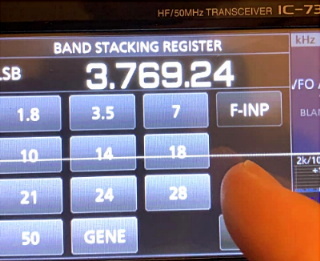|
N9EWO
Review : |
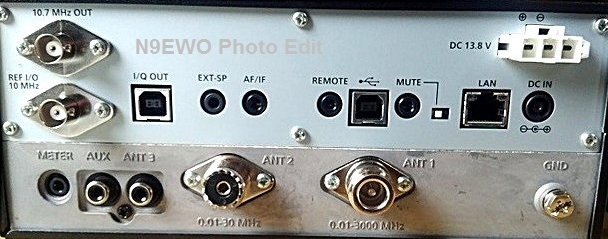
|
I will NOT be held
responsible for any info that is listed here
ALL DONE AT YOUR OWN RISK ! |
|
I will NOT be held
responsible for any info that is listed here
ALL DONE AT YOUR OWN RISK ! |
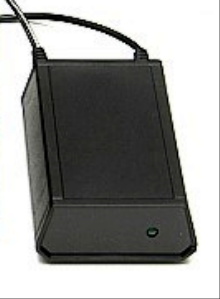
| N9EWO
IC-R8600 TESTING with FIRMWARE with 1.34 / 1.35 |
| Improved in a number of area’s. Some of the fixes were undocumented in
the 1.34 / 1.35 update notes. IMPORTANT NOTE : As many already know Icom does not necessarily list all bug fixes / changes done with any given firmware update. - First the NR (noise reduction) has been improved. Going above #2 setting sounds no more like“R2D2”. NR is now a useful feature whereas before it was a utter disappointment. It now operates similar to the IC-7300’s NR performance. - The “AGC swamping bug“(that I call it) issue when tuning across super strong signals or strong static bursts has now been fixed with 1.34. Excellent news here and appears to have also improved weak signal recovery slightly. - I detect a slight added Bass kick with broadcast stations that have it (most noticed on the FM Broadcast band) with our classic Realistic Minimus 77 speaker. Yes we do indeed set the “Bass” tone setting up to maximum (+ 15) on AM/FM and SSB modes. - A downside with firmware 1.34 / 1.35 in testing was a LOUD SHARP POPPING sound when tuning across strong signals WITH THE SYNC ON (MW and SW frequencies), or with very strong local interference noise. This ill can be reduced to an extent by switching to a slower AGC setting. It seems that this bug is slightly worse with 1.35 but is not a disconcerting issue unless one is dealing with excessive local interference.). So the latest 1.35 firmware is the one to use in our view. - The so called AM Synchronous Detector continues to be a huge disappointment. While it may help to reduce adjacent channel interference, fading distortion is mostly unaffected. The IC-R8600's SYNC is NOT using a true "Synchronous Detector" scheme (the mediocre at best "Synchrophase" Detector ?). Please read this excellent PDF document from Kiwa Electronics via "Fine Tuning" Proceedings "CLICK HERE"). IMPORTANT NOTE : These observations were made using SW Broadcasts, S-AM (D, U or L) mode and 10 kHz (maximum) bandwidth with the "2 Way" Realistic Minimus 77 test speaker (catalog number 40-2054). Bass and Treble both set at +15. |
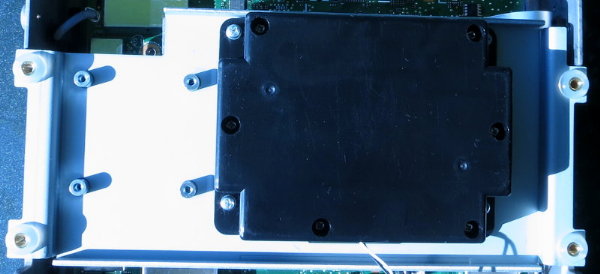
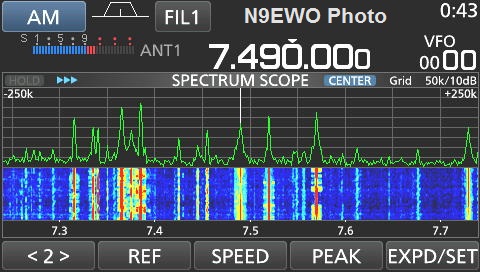
| N9EWO's Icom IC-R8600 "Wish List" |
| As
doubtful any of this will ever happen, here is N9EWO's "Wish List" of
improvements and tweaks to the IC-R8600's firmware
for MW / HF USE that we would like to see (below 30 MHz). Many will say
that having
bandwidth's above 10 kHz are totally useless for MW and HF listening
(N9EWO says different).
Dave N9EWO - Provide a "second" VFO. - Make the RC-28 (Remote Encoder Knob) operate with the IC-R8600 standalone (without ANY computer connection as like with the IC-7610). I would understand an additional interface box and or cable / accessory may be required for connection to the the receiver. - A true "AM Synchronous Detector" circuit (not the inferior "Synchrophase" Detector currently used). - Allow 1 Hz tuning steps with the tuning knob (now only accessible with direct keyboard entry or computer / CI-V control). The lesser IC-7300 HF transceiver can tune 1 Hz steps with the tuning knob. - Provide Wider Bandwidth Selections. - Increase AM Mode
bandwidth up to 12 kHz (or better yet 16 kHz). For MUCH improved audio
with good band conditions.
- Increase SSB Mode Bandwidths up to 6 kHz (or better yet 8 kHz). This would improve manual ECSS audio by leaps and bounds. |
| Simple Feature Comparison List : ICOM IC-7300 vs. IC-R8600 (as a HF SWL Receiver) |
| IC-7300 : - 1 hz steps with tuning knob. - Less AGC swamping (current firmware) - Larger tuning knob. - Tuning Knob has "rotating" finger spinner. - 2 Preamps ((IC-R8600 has one). - 2 VFO's (IC-R8600 has one). - Quick "Memo Pad" function. - Band stacking memories. - Lower current consumption. - Cooler operation. - Actual front panel noise reduction / noise blanker / notch / preamp buttons. - Separate PBT / RF Gain / Squelch knobs. - Less than HALF the cost of a IC-R8600. - FREE Memory Management Software (non ICOM). IC-R8600 : - Wider "Spectrum Scope" span width. - Better AM Mode audio quality (increased bass response). - 3 antenna Inputs with front panel selection. - Timer functions. - Mechanical S-Meter jack. - 1000 total memory channels (IC-7300 is 101). - Smooth or Click step tuning knob. - Better quality recording (with internal digital recorder). - Backlight on-off function. - Network operation / jack. - Standard phone jack audio "line output". - IQ output jack. - FMBC coverage. - Less bulky DC power cable. Dave N9EWO © N9EWO, all rights reserved ver 1.3 |
|
PAGE |
ITEM |
DEFAULT |
** NEW SETTING ** |
|
1/5 |
Max Hold |
10s Hold |
OFF |
|
1/5 |
CENTER Type Display |
Filter Center |
Carrier Point Center (ABS Freq) |
|
2/5 |
Averaging |
OFF |
4 |
|
2/5 |
Waveform Type |
FILL |
FILL + LINE |
|
2/5 |
Waveform Color (Current) [FILL COLOR] |
R : 172 G : 191 B : 191 |
R : 0 G : 0 B : 0 |
|
2/5 |
Waveform Color (Line) [LINE COLOR] |
R : 56 G : 24 B : 0 |
R : 0 G : 255 B : 0 |
|
3/5 |
Waterfall Display |
ON |
OFF |
|
4/5 |
Waterfall Size (Expand Screen) |
Mid |
* Small |
|
4/5 |
Waterfall Peak Color Level |
Grid 8 |
Grid 4 |
